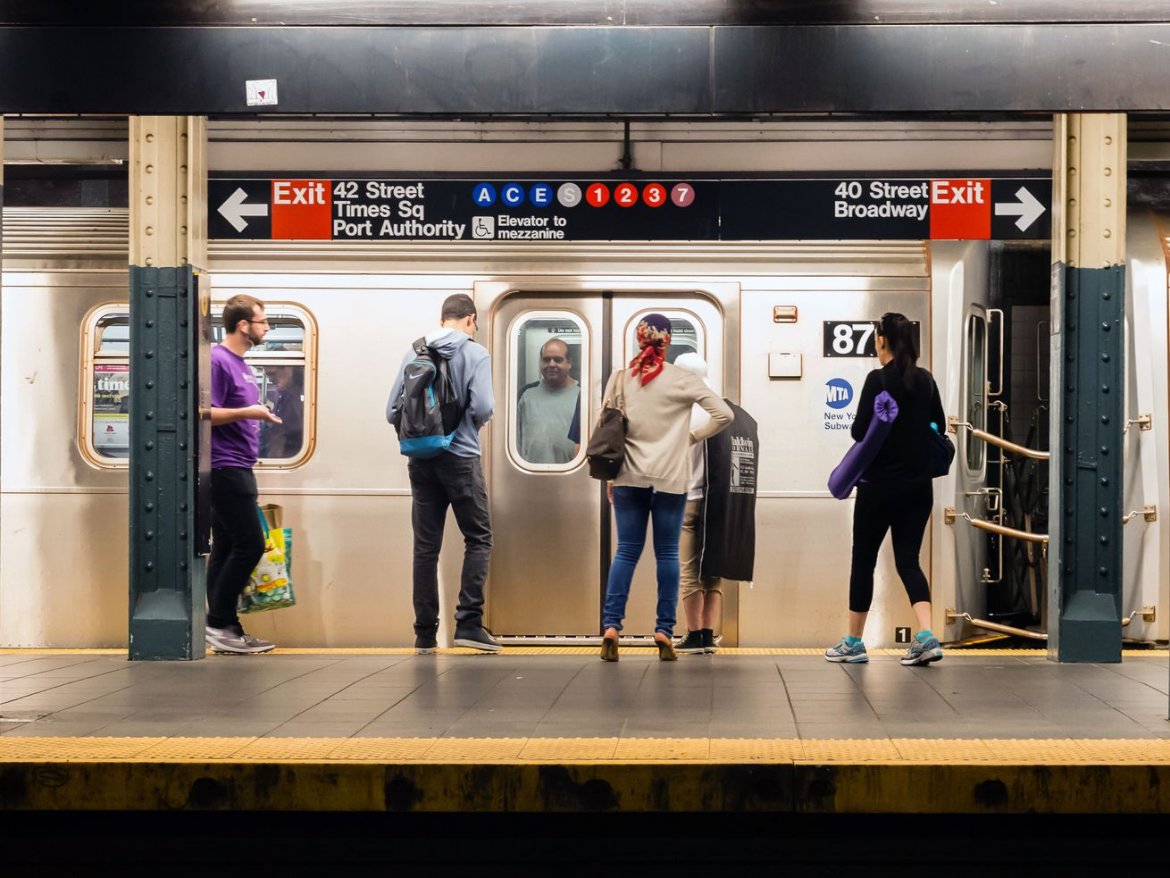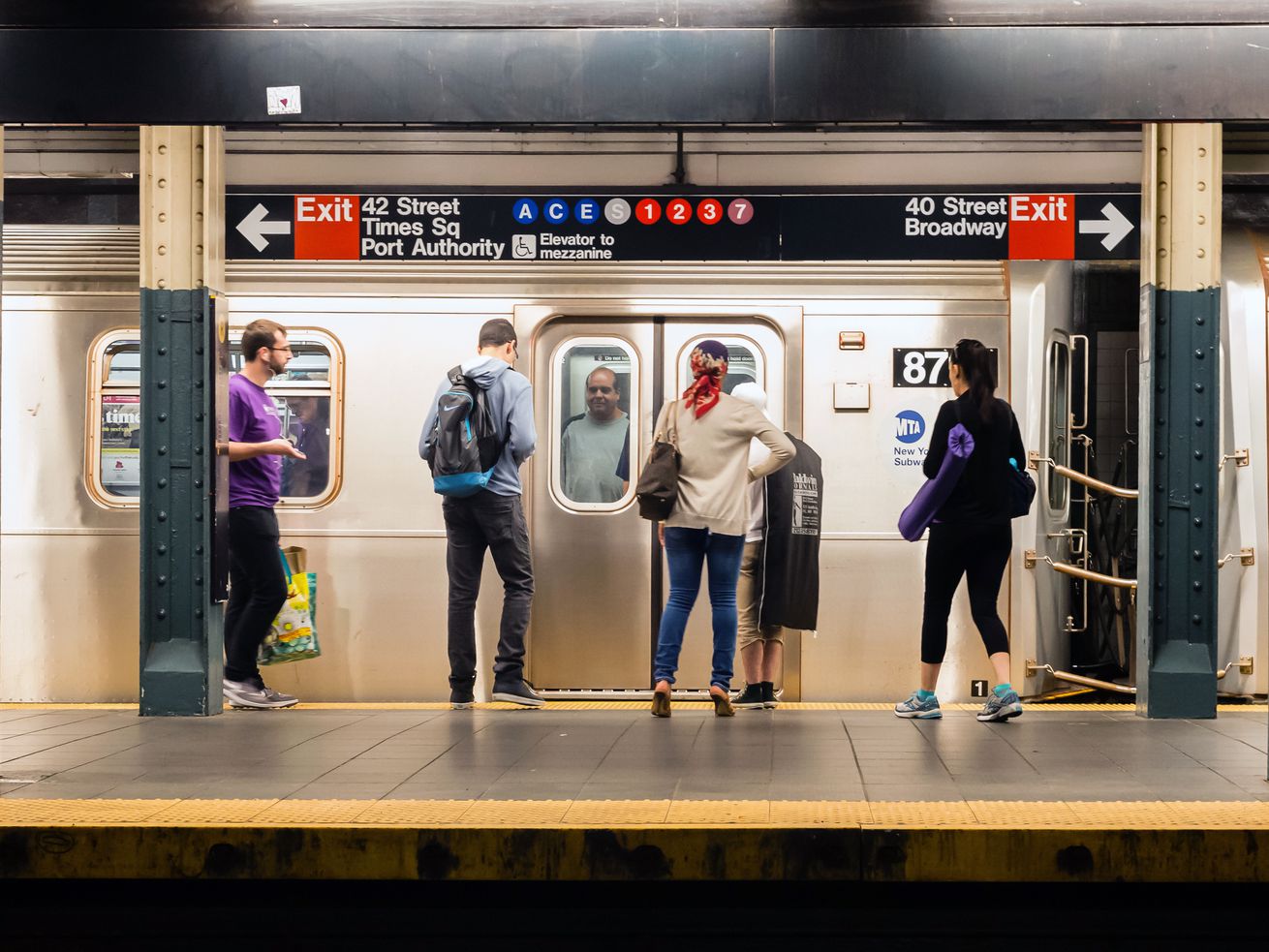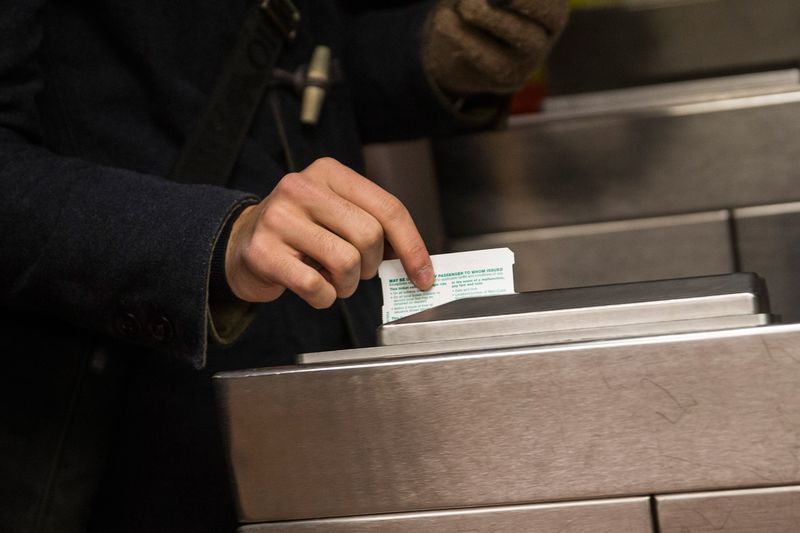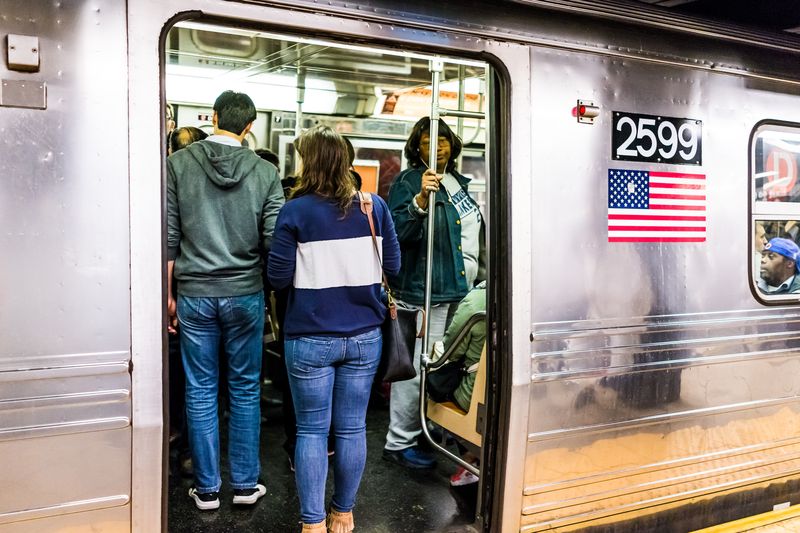
10 tips for riding NYC transit like a pro

 Shutterstock
Shutterstock
Give yourself extra time, get an app, and more tips for navigating NYC’s mass transit
If you’re not from New York City—or if you haven’t lived here for so long that you’re basically a native—you might be used to getting around with a thing called a “car,” a two-ton box with four wheels that runs on gas.
But that’s not the best mode of transit for many New Yorkers; our traffic is among the worst in the world, and it’s not getting better anytime soon (at least, not without congestion pricing). If you want to stay sane (and not devote a good chunk of your life to dealing with alternate-side parking regulations), it’s best to embrace mass transit in New York—specifically, the subways and buses.
Pieces of the former may be falling from the ceiling, and speeds for the latter may be slowing, but New York’s subway and bus have some things going for them: They’re relatively cheap, open 24/7, and go through all five boroughs (yes, even Staten Island).
Whether you’re a visitor or a new transplant, you may want some advice to feel more at ease in New York’s vast subway system—so here are 10 tips for navigating the subway and bus like a pro (though we can’t help you with the MetroCard swipe, short of telling you that it’s all in the wrist).
1. Plan way, way ahead. Subway delays are, unfortunately, a part of life, and nothing short of courageous political leadership to bring about the necessary upgrades that will drag the subway into the 21st century will fix that. Until then, no matter what the MTA or Google Maps tells you about how long it’s going to get somewhere, do not believe their lies. Leave early—15 minutes, an hour, whatever makes you comfortable—to get somewhere if you really need to be on time. At worst, you’re a little early and have time to kill, which is better than grinding your teeth as the train inches forward due to signal problems at the next station.
2. Download an app. No one has ever accused the MTA of being ahead of the curve, and in the year of our lord 2018, the agency finally rolled out an app that covers its subway, bus and commuter rail services. You can save frequent trips, pull up subway stations and bus stops near you, get service updates, and find all sorts of bus and train maps. (Another good app option is Transit, if you find the MTA’s beta version to be too clunky.)
You’ll need a separate e-Tix app to buy a virtual ticket for the Long Island Rail Road. The MTA’s contactless payment system, OMNY, doesn’t have its own app—yet—but you can use a digital wallet on your smartphone to tap and go.
3. Unlimited or not unlimited? Depending on your daily commute, you might find that you do better with an unlimited MetroCard, which comes in two flavors: a 30-day MetroCard for $127 and a 7-day for $33. Take some time to see how much you ride the subway to figure out how much you’re on it before committing to something like a 30-day card every month. You just might find that you walk or bike everywhere (especially since a one-year Citi Bike membership is just $169); in that case, buy an occasional $40 MetroCard, or get a 7-day card if you’re entertaining a visitor who you’ll be riding around with all week. And if you do have an unlimited, be sure to swipe it forward.
 Photo by Andrew Burton/Getty Images
Photo by Andrew Burton/Getty Images4. Don’t forget to refill your MetroCard. You know what sucks? Running to catch a train, hearing it pull in as you swipe, and only then realizing you don’t have enough money on your MetroCard. (This also applies when running to make a bus.) To avoid this, pay attention to how much is left on your card when you swipe in. If you’re under $2.75, just fill up again at the station when you exit, which will help you avoid getting stuck behind a family of tourists trying to figure out the MetroCard machine as you watch the time tick down on the arrival sign (assuming it’s working).
5. Or just snag a pre-tax card. If you’re one of these fancy people with a full-time job (look at you and your employer-based health insurance), you can save a little money thanks to the city’s pre-tax MetroCard offer. Yes, a 30-day card will still cost you $127, but that $127 will be deducted from your pay before taxes, which is a pretty good deal. The Riders Alliance even made a calculator so you can see how much money you can save per year with the pre-tax option.
6. Get to know the stations you frequent. You might be tempted, at the end of a long and exhausting commute, to just get off your train and leave it at that. But it’s worth taking some time to familiarize yourself with your most-visited stops. Walking down in an entrance that puts you closer to where a train stops—crucial on, say, the C or G lines, where trains don’t always extend for the full length of the track—could be the difference between getting where you’re going and waiting around for for the next train.
7. Be mindful of what you eat (or drink). There may be train systems where you can’t scarf down your morning bagel, but New Yorkers don’t buy that sort of thinking—you can eat a BEC or have a cup of coffee without someone threatening to call the cops. But your odds of becoming a viral photo or video increase along with the olfactory intensity, so try to avoid chowing down on anything too strong in order to spare your fellow commuters. (This also goes for food that will make the subway messier than it already is.)
 Shutterstock.com
Shutterstock.com8. Keep moving, especially when you leave a station. It bears repeating: When you get to the exit of a station, walk some steps forward, even if you don’t know where you are. This will prevent people from walking directly into your back—or worse, stopping until you start moving and therefore causing a traffic jam of people trying to leave. Getting your bearings is important, but don’t jam up the works by not getting the hell out of the way.
9. Observe other common-sense etiquette rules. The subway is a cramped space that has to fit a lot of people, but you can try to make the ride slightly easier for yourself and others. Stand to to the side to let people off the train; put your backpack or messenger bag on the ground in crowded trains; avoid filling the seats next to you with all your stuff or your sense of entitlement ; and walk all the way into the train instead of stopping six inches after walking through the doors.
Admittedly, you’re going to come across dozens of people who violate these etiquette rules, or clip their toenails, or even bring a whole moped on the car and park it in front of the doors. The truth—as any exhausted, beaten down New Yorker will tell you—is that often, there are no rules on the subway beyond the New York City Criminal Code, no matter what any subway etiquette guides might tell you. But it never hurts to have a little bit of spatial awareness.
10. If all else fails, get a bike. Everything in the city is dangerous to some degree, we’ve even got coyotes running around like they own the place. So, don’t let someone tell you riding a bike is “too dangerous,” especially as the city continues to embrace more bike infrastructure across the five boroughs.
Love where you live


